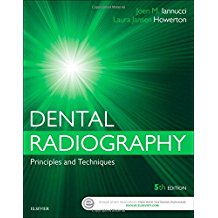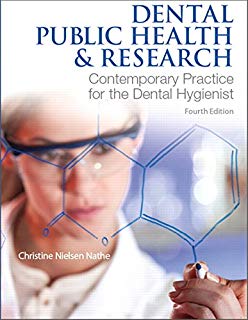Dental Radiography Principles and Techniques 5th Edition By Joen Iannucci-Test Bank
Original price was: $35.00.$24.97Current price is: $24.97.
Format: Downloadable ZIP File
Resource Type: Test bank
Duration: Unlimited downloads
Delivery: Instant Download
Dental Radiography Principles and Techniques 5th Edition by Joen Iannucci is a comprehensive guide that provides insights into the principles, techniques, and history of dental radiography. The Test Bank for this book offers valuable practice questions that help students assess their understanding of the material and prepare for exams effectively. The ISBN-10 for this book is 0323297420, and the ISBN-13 is 978-0323297424.
Chapter 01 of the Test Bank covers the topic of Radiation History. It includes multiple-choice questions that test the reader’s knowledge of key concepts related to radiation, radiographs, and the history of dental radiography.
1. **Radiation Definition**: Radiation is defined as a form of energy carried by waves or streams of particles.
2. **Radiograph Definition**: A radiograph is defined as a picture on film produced by the passage of x-rays through an object or body.
3. **Importance of Dental Images**: Dental images are crucial as many dental diseases are typically discovered only through the use of dental images.
4. **Discovery of X-Ray**: The x-ray was discovered by Wilhelm Roentgen on November 8, 1895.
5. **First Dental Radiograph in the US**: Edmund Kells exposed the first dental radiograph in the United States using a live person.
6. **Advancements in Radiographic Film**: Current fast radiographic film requires 98% less exposure time than the initial exposure times used in 1920.
7. **Modified Paralleling Technique**: F. Gordon Fitzgerald modified the paralleling technique with the introduction of the long-cone technique.
This Test Bank is a valuable resource for students studying dental radiography as it helps them test their knowledge and reinforce key concepts from the textbook.
**FAQs:**
1. **What is a Test Bank?**
A Test Bank is a collection of test questions tailored to the contents of a specific textbook. It provides students with additional practice questions to enhance their understanding of the material.
2. **How can the Test Bank help students prepare for exams?**
The Test Bank offers a variety of questions that cover the different topics in the textbook. By practicing these questions, students can assess their knowledge, identify areas of weakness, and prepare effectively for exams.
3. **Are Test Banks useful for self-study?**
Yes, Test Banks are useful for self-study as they offer an additional resource for practicing and testing one’s understanding of the material outside of regular coursework.
**Conclusion:**
The Test Bank for Dental Radiography Principles and Techniques 5th Edition By Joen lannucci is a valuable resource for students studying dental radiography. By providing a range of practice questions that test the reader’s knowledge of key concepts, the Test Bank helps students prepare effectively for exams and reinforces their understanding of the material. For individuals looking to excel in their studies of dental radiography, utilizing the Test Bank can be a beneficial supplement to their learning.Are you curious about the different techniques and characteristics of dental radiography? Understanding the history of radiography and the advancements in technology can provide insight into the field of dental imaging. Let’s explore some common questions related to dental radiography:
**FAQs**
1. **What is the difference between the long-cone and bisecting techniques in dental radiography?**
– The long-cone technique involves placing the x-ray tubehead at a greater distance from the film or sensor, resulting in less image distortion. The bisecting technique, introduced by Howard Riley Raper, focuses on angling the x-ray beam to capture images without superimposing adjacent structures.
2. **What are the advantages of digital imaging in dental radiography?**
– Digital imaging reduces patient radiation exposure, offers increased speed for viewing images, and eliminates the need for chemical processing, allowing for immediate interpretation and evaluation.
3. **What was the precursor to the discovery of x-rays?**
– Wilhelm Roentgen discovered x-rays while experimenting with cathode rays, which led to the development of this groundbreaking technology. X-rays are not associated with beta or alpha particles or radioactive materials.
4. **What is placed in the patient’s mouth to take dental x-rays?**
– An image receptor, such as film, phosphor plate, or digital sensor, is placed in the patient’s mouth to capture the x-ray image. This recording medium records the image produced by the x-rays, allowing for detailed examination of dental structures.
**Conclusion**
Dental radiography plays a crucial role in diagnosing and treating dental conditions by providing detailed images of oral structures. Understanding the various techniques and characteristics of dental imaging can enhance the quality of patient care and treatment outcomes. Advancements in digital imaging have revolutionized the field, offering benefits such as reduced patient radiation exposure and immediate image interpretation. Stay informed about the latest developments in dental radiography to provide optimal care for your patients and contribute to the advancement of dental technology.
User Reviews
Be the first to review “Dental Radiography Principles and Techniques 5th Edition By Joen Iannucci-Test Bank”

Original price was: $35.00.$24.97Current price is: $24.97.






There are no reviews yet.